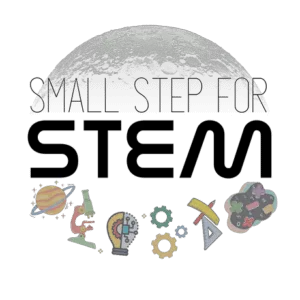Disclosure: this post contains affiliate links, which means I may receive a commission if you click a link and purchase something at no extra cost to you. Please check out our policies page for more details.
for more details.
Does your child enjoy looking up at the clouds and finding shapes? If so, they will love making cloud collages!
This experiment helps kids to understand some basic meteorology, the water cycle, and helps them work on their observation and fine motor skills.
Let’s check out some clouds!

How to make the Cloud Collages experiment
Supplies you will need
For this experiment, you’ll need:
- Blue construction paper (several sheets)

- Cotton balls

- Glue

- Markers
- Gray tempera paint
 (these are great paints to have on hand and you can mix black and white to get the gray color you want!)
(these are great paints to have on hand and you can mix black and white to get the gray color you want!)
Here is a kid’s book explaining cloud types that you can use to accompany this experiment.

Before you start
I recommend starting with a few more well-known clouds (cumulonimbus, cirrus, cumulus, and altocumulus) for younger kids so they aren’t overwhelmed.
Instructions
Here is how to do this experiment with your child:
Step 1: Look at pictures of different types of clouds
Before we get started with the collages, you should look at different types of clouds with your child. Whether you print them out, look at a book, or research them together on a computer, just be sure you get a well-rounded idea of the different types of clouds!
For younger kids, here are some clouds you could search for:
- Cirrus
- Cumulus
- Cumulonimbus
- Altocumulus
For older kids, here are a few more in addition to the list above:
- Nimbostratus
- Stratus
- Cirrocumulus
- Cirrostratus
- Altostratus
- Stratocumulus
Here is a great graphic showing the cloud types that you could make with your child.
types that you could make with your child.
Step 2: Write the type of cloud at the bottom of each piece of paper
Once you decide on which cloud types you would like to make, write the types on their own piece of paper, near the bottom.

Step 3: Create the “storm clouds”
Pour some gray paint (or mix black and white) into a sandwich bag. Start with a little bit, since you don’t want to soak the cotton balls.
Place a handful of cotton balls (enough for one cloud) into the sandwich bag, close the bag, and shake the cotton balls around inside to paint them gray.
Take them out to dry a bit before continuing.


Step 3: Recreate the clouds with cotton balls
Now, the fun part!
First, have your child take a look at the cloud type they’re making. Is it a puffy, circular cloud or more of a stretched-out cloud? That will help dictate if you should keep the cotton ball as-is or stretch it out to recreate the cloud.
Once you have an idea of what to do with the cotton balls to recreate the cloud type, add some glue to the paper and start sticking your cotton balls!
When I glued the cotton balls to each piece of paper, I tried to place them according to where they can be found in the atmosphere. Cirrus, for example, is a higher atmosphere cloud, so I placed it higher on the paper. There’s only so much paper you can work with, so do what you can.






The STEM behind the Cloud Collages experiment
This experiment teaches:
- Meteorology
- Fine motor skills
- Observation
How it works
This experiment teaches children how to observe the variety of clouds and a little about each cloud.
By creating cloud collages, children can visualize the puffiness of some clouds while other clouds are wispy. They can use a gray marker or paint to show a cumulonimbus, which is a saturated cloud that can produce heavy precipitation.
This experiment helps kids to understand some basic meteorology, the water cycle, and helps them work on their observation and fine motor skills!
Meteorology
Cloud collages can be a springboard for learning about different cloud types, their shapes, and how they are formed.
Clouds are made of tiny water droplets and ice crystals that originate as water vapor. That water vapor can make its way up into the air by evaporation (from water sources like lakes and oceans) or transpiration (from plants).
As air rises in the atmosphere, it gets cooler, and some of that water vapor condenses. There is also less pressure as you travel up, and as the air pressure drops, some water vapor condenses too. The water vapor becomes small water droplets and a cloud is formed.
Once the cloud and the air around it become saturated (can’t hold any more water), we have precipitation!
Fine motor skills
Stretching and gluing the cotton balls for the collage helps children develop the small muscles in their hands and fingers, which are important for tasks like writing and dressing.
Observation
Using your cloud collages on a cloudy day helps kids to recognize clouds and boosts their observation skills!
